Healthcare and medical advancements have helped increase life expectancy and the overall state of wellbeing of people. But as life expectancy rises, in many parts of the world, the healthcare system is struggling to meet the rising demand for care, while managing cost and shortage of healthcare professionals. An additional burden was the pandemic outbreak last year which brought whole healthcare systems on their knees, unable to respond to the needs of an eruption of COVID patients and not having a proper cure for the new virus.
Artificial intelligence has already proven to have the potential to revolutionise healthcare. AI in healthcare can improve the productivity and efficiency of care delivery, majorly improve the everyday work of healthcare professionals, lead to improved outcomes for patients, and even help launch life-saving treatments faster.
AI has found various application in the health sector, and new methods are being invented as we speak. Below we are exploring 10 ways artificial intelligence is reinventing healthcare, acting as a powerful ally to healthcare professionals and improving outcomes for patients.
Learn more about the NDSML Summit
AI-assisted diagnosis
AI helps practitioners for a faster and more accurate diagnosis. Misdiagnosis is the reason for 251,000 deaths annually in the United States, making medical errors the third leading cause of death, studies find. Traditional diagnosis methods require professionals to scour immense amounts of data to diagnose a patient.
One of the most common misdiagnosis is medical errors with x-rays and medical imaging, where doctors fail to notice signs of life-threatening diseases. Healthcare professionals can leverage AI to make a faster, more accurate diagnosis and reduce human error. AI models relying on deep learning have already proven to achieve a better diagnosis of breast cancer than 11 pathologists in a simulation exercise designed to mimic routine pathology workflow.
AI algorithms can analyse large images of pathology slides and allow clinicians to identify nuances in data more accurately and with fewer errors, which may occur due to variation in the skill, training, and experience of pathologists.
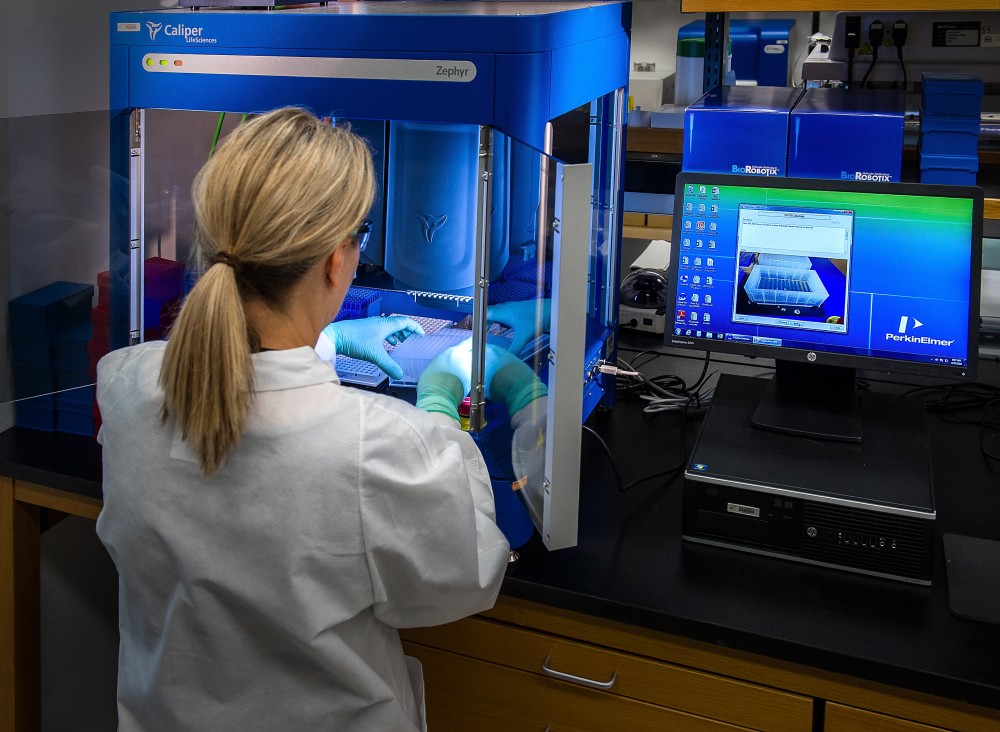

AI-powered radiology
Developing countries suffer from severe shortages of trained healthcare providers, including ultrasound technicians and radiologists, which significantly impacts access to life-saving treatment. AI can help alleviate the impact of the clinical staff shortage by assisting with screening X-rays and automated image analysis and presenting the radiologist with the area to focus their attention on the scan.
Deploying AI in radiology can also offer fully automated solutions that automatically read and interpret scans without human intervention, enabling instant interpretations. There are already companies pioneering in this field. Enlitic, a company in California, develops deep learning medical tools to streamline radiology diagnosis. Their system takes into account unstructured medical data such as radiology images, blood tests, EKGs, genomics, patient medical history to give doctors better insight into a patient’s condition and needs.
Drug discovery and development
The discovery and development of new medicines is a protracted process involving thousands of human hours and huge cost. Around US$2.6-billion price tag is attached to developing a treatment. Most of them go down the drain as 1 of 10 makes it successfully to the market, while the rest trials fail in the process.
AI can help accelerate the delivery of findings in drug discovery and introduce greater efficiency and accuracy in the medicine development process. Evidence of this was one of the greatest breakthroughs in drug development from 2007 when a robot named Adam identified the function of the yeast. The algorithm parsed through billions of data points in public databases, hypothesised about the functions of 19 genes and accurately predicted 9 new hypotheses.
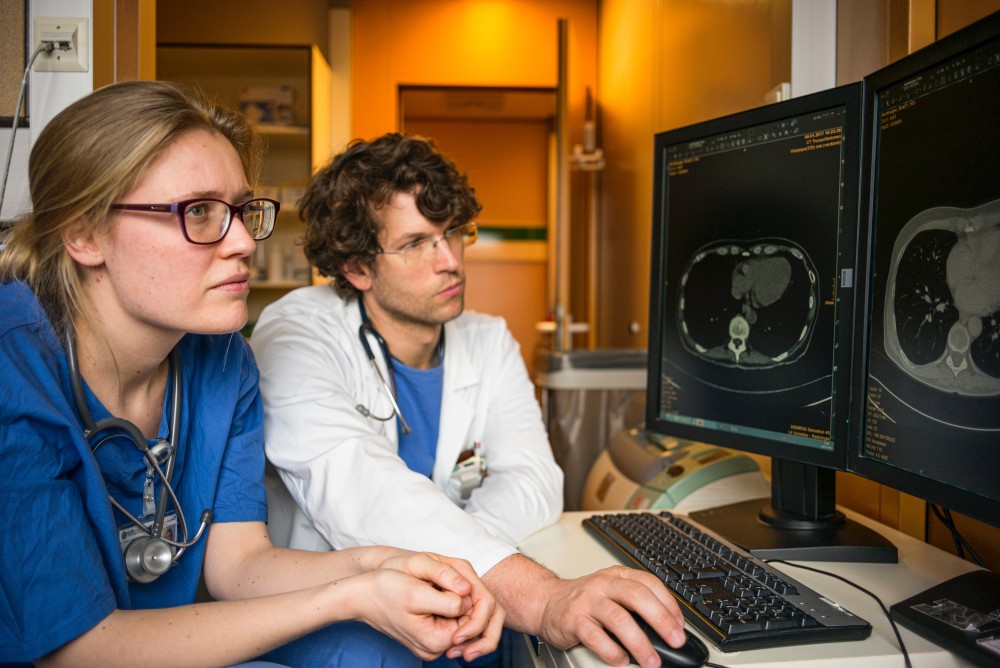

AI and managing medical data
Healthcare is considered one of the most challenging sectors when it comes to big data. Medical notes in electronic medical records are unstructured and can be difficult to interpret and process. Not to mention that in the ocean of trillions of data points, valuable information can get lost and affect preventive medicine, diagnosis and patient treatment.
AI-assisted medical data management has a huge potential to save lives and money in the healthcare industry. Putting algorithms in the process of data crunching can save the medicine and pharma industry up to $100 billion a year.
To make sense of the mountains of data and break down silos in storage systems, healthcare providers are applying AI to their electronic healthcare records. Besides improving data discovery, extraction and treatment recommendations, integrating AI in medical records offers user-friendly benefits. Virtual medical assistants and AI-based speech to text input can make retrieval of data easier for practitioners and mitigate clinical burnout caused by filling data into electronic healthcare records.
Virtual health assistance
The need to streamlined access to healthcare and optimise services has lead to increased investment and development of AI-driven virtual health assistants. They are becoming so widely-accepted that reports show the healthcare virtual assistant market will reach USD 2.83 billion By 2027. What’s more, rising customer expectations, access to smart devices and technology, as well as the shift to value-based care are major drivers for booming virtual assistance adoption.
And it’s no surprise. Voice or chat-based virtual assistants review patients’ symptoms, provide quick, scalable access for basic questions and medical issues or recommend a virtual check-in or a face-to-face visit with a healthcare professional. This way, virtual assistants help avoid unnecessary visits to the doctor, reduce the demand for primary care while improving patient safety.
Another application of virtual assistants enables doctors to track chronic disease patients. Tools can collect information about everyday activities, perform at-home patient health screenings, and provide results to the doctor for the next scheduled appointment.
Streamlined clinical decision-making
As healthcare shifts away from fee-based to value-based care, it moves away from reactive towards preventive care. If clinicians are able to predict acute, chronic diseases, it will not only save patients life and improve their quality of life, but it will significantly reduce the cost associated with treating a disease that could have been prevented.
The development of AI and Machine Learning-powered clinical decision support tools enables providers to carry proactive interventions for problem long before there is a need for them to react.
For example, detecting early signs for seizures or sepsis requires an intensive analysis of large volumes of complex data. Or deciding whether to continue with care for critical patients who have fallen into a coma caused by cardiac arrest requires practitioners to detailly inspect ECG data, which can be time-consuming and subjective. But AI can help detect patterns and early alerts that greatly impact the clinical decision.
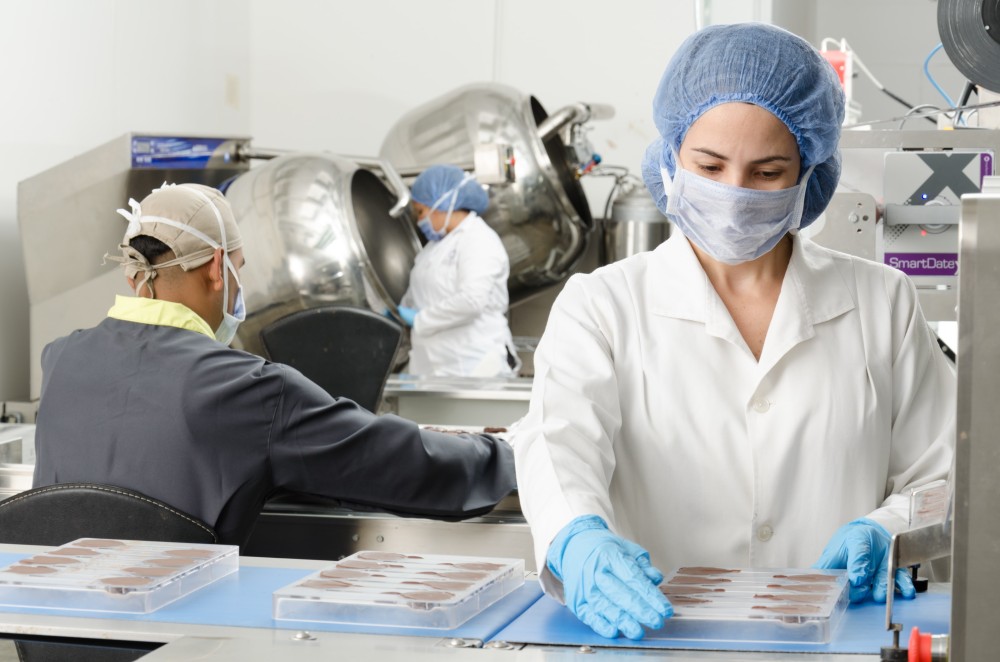

Targeted treatment
Sometimes treatment plans that work for some patients, may not work for others. This is the case with immunotherapy for creating cancer, where the patient’s immune system is used to attack malignancies. However, these treatment options work only for a small number of patients, and oncologists don’t have a reliable method to identify the patients that will benefit from this cancer treatment.
Machine learning offers promises of discovering new options for targeted treatment for patients with unique genetic makeup. There are already trailblazers that are using AI to match patients with the right treatment. BenevolentAI is using deep learning to produce a better target selection and provide previously undiscovered insights to get the right treatment to the right people. Tempus is developing AI-driven tools to advance cancer research and treatment by analysing data in everything from genetic sequencing to image recognition.
Check out how ML and Data Science are deployed in other industries
Robotics and AI-assisted surgery
AI-equipped robots are becoming mainstream in surgery. Robots are assisting surgeons in everything from microsurgeries on tiny blood vessels, less invasive procedures to more complex procedures like brain or heart surgeries. Applying robotics assistance in critical surgeries helps lower surgeon variations that could have a negative effect on patient recovery, but also allows doctors to perform operations with precision and control beyond human capabilities.
Operations involving human doctors with their knowledge and expertise, and robots equipped with cameras, adept mechanical arms and instruments, present innovative ways of performing surgeries. Robots don’t operate autonomously, but are controlled by a surgeon from a computer console. Robotics-assisted surgery contributes to fewer surgery-related complications, less pain and a quicker recovery time.
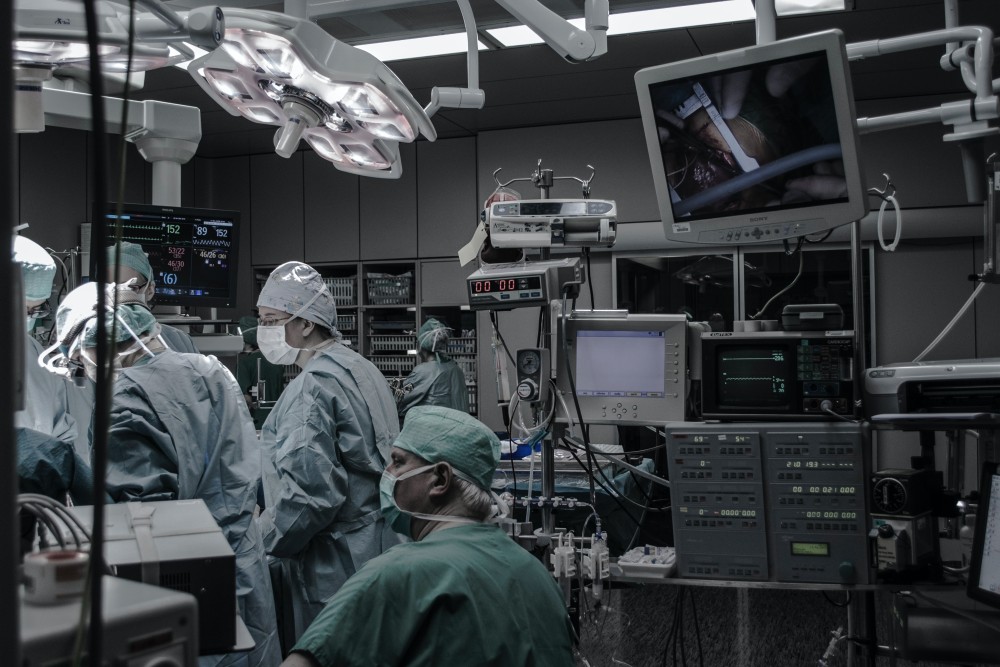

Optimising patient journey and experience
AI can also prove instrumental in streamlining the overall patient experience. In an industry where access to service may mean a difference between life and death, AI can help identify access challenges and provide a seamless patient experience.
However, among the most common patient complaints are related to rudeness of physicians, sub-par front desk experience and over-complicated paperwork. With the help of AI, hospital staff can streamline patient communication, which will drastically improve patient experience and process data in a much faster and efficient way. Chatbots are perfect for providing better access to primary care and patient interaction.
By integrating AI and chatbots in patient communication, hospitcals can provide self-service options or refer them to the right person of contact, and at the same time reduce repeat phone calls in the exceptionally crowded call centres.
Also, AI can help providers improve patient flow by helping process billions of data points, automating administrative tasks, managing patient data, clinical history and payment information, as well as creating personalised healthcare plans.
Proactive medical care
Artificial intelligence is driving a shift in modern healthcare, moving from reactive healthcare to predictive medicine and proactive healthcare. Opposed to the conventional medicine where the patient visits their doctor after contracting symptoms and is prescribed a treatment based on them, AI empowers studying patient’s medical history and highlighting high-risk markers.
After identifying at-risk patients, they are observed for any sudden change in their condition. There are also AI apps that encourage patients to take proactive participation in their health by prescribing actions they can take to improve health and not wait until there is a need for a doctor’s appoinment.
Wrap up
These are some of the outstanding instances where AI is transforming the healthcare industry. Healthcare is one of the greatest achievements of humanity, the highest act of selflessness where humans are working towards enhancing the health and wellbeing of other fellow humans.
Integrating AI into the diagnosis, disease detection, treatment and prevention, does not only empower care divers and patients, but also presents the ultimate example of using advanced technology for doing good.

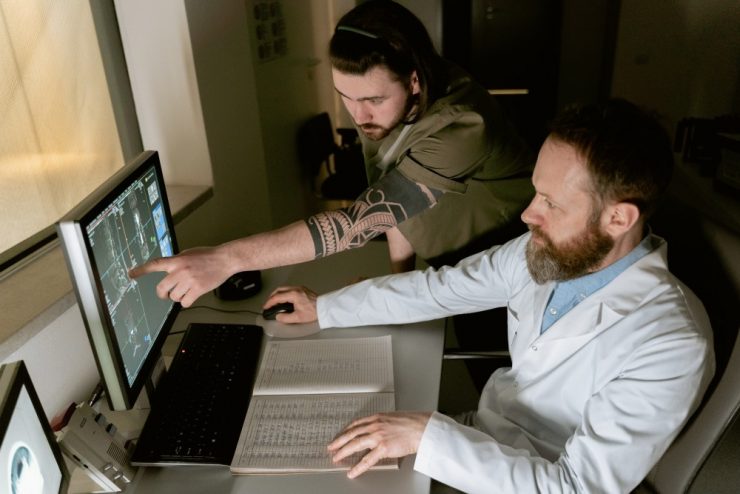

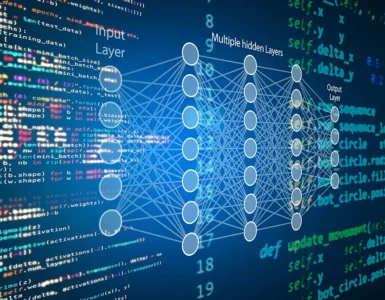












Add comment